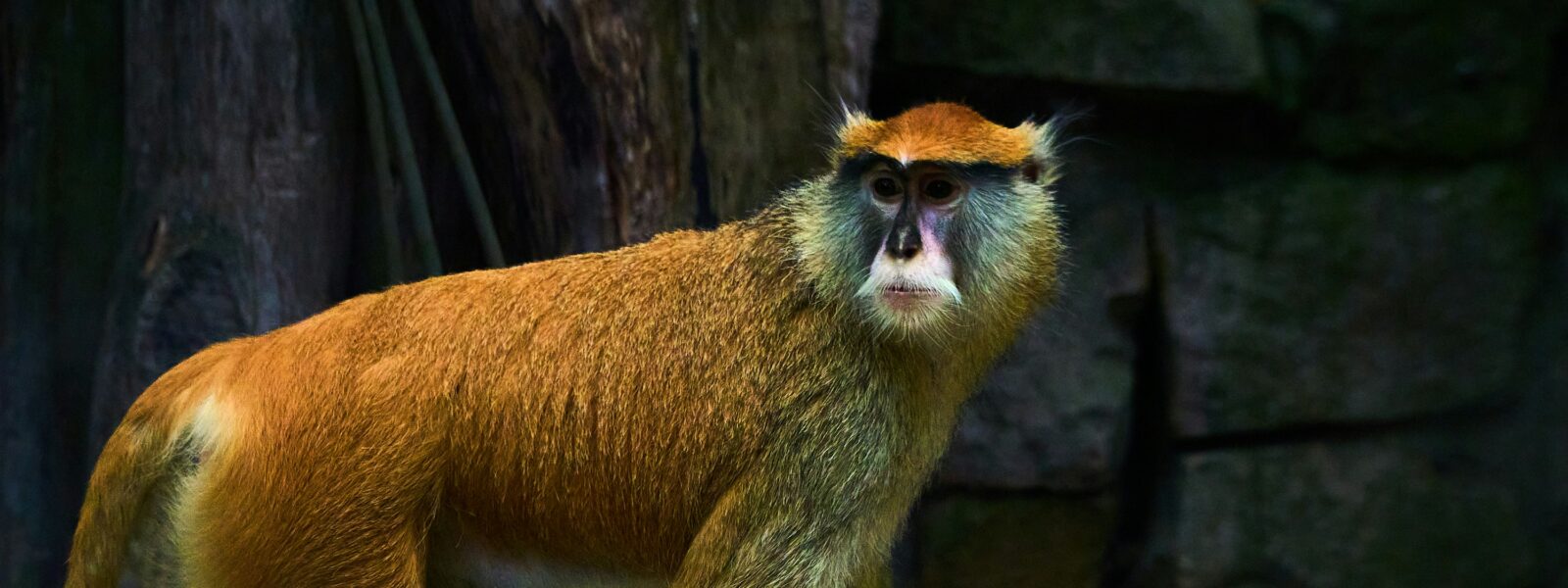Vast and open savannas of northern Kenya, where tall grasses shimmer under the sun and predators lurk in open, a reddish streak breaks the horizon. Patas Monkey (Erythrocebus patas) is a remarkable primate built for speed and survival. Nicknamed the military monkey for its rusty-red coat and black, soldier-like facial markings. Unlike vervet or colobus monkeys, which spend most of their time in trees, the Patas monkey has adapted to life on the ground, thriving in Kenya’s dry savannas and semi-arid plains.
The Patas monkey has long limbs, keen awareness and sprinting ability of up to 55 km/h, the fastest primate in the world and one of the most fascinating to observe on safari.
Patas monkey’s unique features
Speed
Patas monkey is the fastest primate, capable of sprinting up to 55 km/h (34 mph). It incredible speed acts as defense against predators in the open savanna, where there are few trees to climb for safety.
Appearance
They have a slender, long-limbed body with reddish-brown fur on the back, white underparts and distinctive black facial markings that resemble a mustache or mask, hence the nickname military monkey.
Lifestyle
Unlike most primates that live in trees, Patas monkeys are ground-dwelling. They spend much of their time foraging, moving across the grasslands and climbing trees for safety or sleeping.
Sexual dimorphism
Males are much larger than females, often weighing twice as much. Males average 10–13 kg while females weigh 4–6 kg.
Social structure
Troops usually made up of 20–40 individuals, led by one dominant male.
Dietary adaptations
Patas monkeys are omnivores; they eat grass seeds, pods, fruits, roots, insects and small vertebrates, making them highly adaptable to dry conditions.
Behavior
They are extremely alert and cautious and often post to scan for predators such as lions, leopards and jackals.
Vocalizations
They communicate through barks, grunts and alarm calls, especially when warning the troop of danger.
Where to find Patas monkeys in Kenya
Patas Monkeys are not as widespread as baboons or vervet monkeys, but are found in several regions of northern and central Kenya. Its preference for open savannas and semi-arid grasslands makes sightings rare but rewarding for safari-goers.
The Samburu National Reserve
One of the best places to spot Patas monkeys. They roam the open savanna alongside other northern specials like Grevy’s zebra and gerenuk.
Laikipia Conservancies
Community and private conservancies across Laikipia provide strongholds for Patas populations, where conservation efforts help protect them from habitat loss.
Tsavo National Park
Smaller and scattered groups of Patas monkey live in drier parts of Tsavo, where they blend into the vast wilderness.
The Patas Monkey is a rare and increasingly endangered species, uniquely adapted to vast savannas. It is less famous than the Big 5, spotting Patas monkey racing across the grasslands of Samburu,Laikipia or Tsavo is a true safari highlight. It reminds us that Kenya’s wilderness is not about the iconic species but also the hidden treasures that make it so diverse and endlessly captivating.

